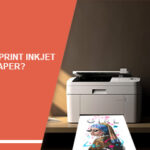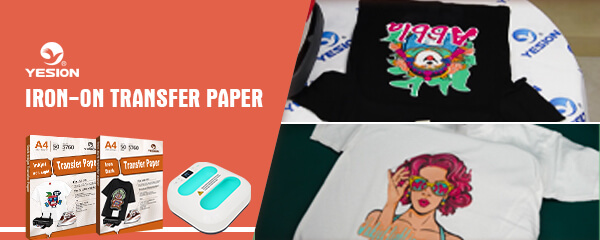
Crafting Magic: DIY Projects with Printable Sticker Vinyl
2024-01-12




Embarking on a crafting journey often leads to the question: Is Heat Transfer Paper The Same As Iron-On Transfer Paper? Let’s embark on a journey to unravel the nuances and guide you through the distinct characteristics of these two crafting essentials.
Heat transfer paper and iron-on transfer paper are not the same. While they are both used in the process of heat transfer, there are some differences between the two.
Basics of Heat Transfer Paper
At its core, heat transfer paper is a versatile crafting tool. The fundamental concept involves using a special paper that, when subjected to heat, seamlessly transfers designs onto various surfaces. Whether you’re envisioning personalized T-shirts, vibrant mugs, or unique home decor items, heat transfer paper is your creative companion.
Applications in Crafting Projects
The applications of heat transfer paper extend across a myriad of crafting projects. Its adaptability makes it a popular choice for creating custom garments, accessories, and even home furnishings. The possibilities are limited only by your imagination.
Advantages of Heat Transfer Paper
Heat transfer paper boasts several advantages, making it a preferred option for many crafters. Its versatility, ease of use, and compatibility with different materials contribute to its popularity. Additionally, the durability of designs on hard surfaces adds to its appeal.
How to use inkjet glitter dark heat transfer paper?
Mechanism Behind Iron-On Transfer Paper
On the flip side, iron-on transfer paper is tailored for fabric applications. The process involves transferring a design onto fabric using heat, typically applied with a household iron. While the basic concept aligns with heat transfer, the focus on fabrics sets it apart.
Materials Compatible with Iron-On Transfer
Iron-on transfer finds its sweet spot in the realm of fabrics. Understanding the materials compatible with this method is crucial for achieving optimal results. Whether it’s cotton, polyester, or a blend, each fabric type may require specific considerations.
Creative Potential of Iron-On Transfer
The creative potential of iron-on transfer shines when intricate and colorful designs come into play. From personalized clothing items to embellished accessories, this method adds a layer of customization to fabric-based projects.

Iron-On Transfer Paper
Material Composition
One of the key distinctions lies in the material composition. Heat transfer paper often utilizes vinyl or other heat-sensitive materials, while iron-on transfer paper involves a special transfer paper designed for fabric applications.
Application Techniques
The application techniques vary as well. Heat transfer requires a heat press or iron, providing flexibility in the crafting process. On the other hand, iron-on transfer predominantly relies on household irons, catering specifically to fabric projects.
Durability and Longevity
Consideration of durability and longevity is essential. Heat transfer is known for its durability, especially on hard surfaces. Iron-on transfer, while robust, may exhibit slightly less longevity, particularly on fabrics.
In summary, while both heat transfer paper and iron-on transfer paper are used in the heat transfer process, they have different characteristics and application methods. It’s important to choose the appropriate paper for your specific heat transfer project to ensure the best results.